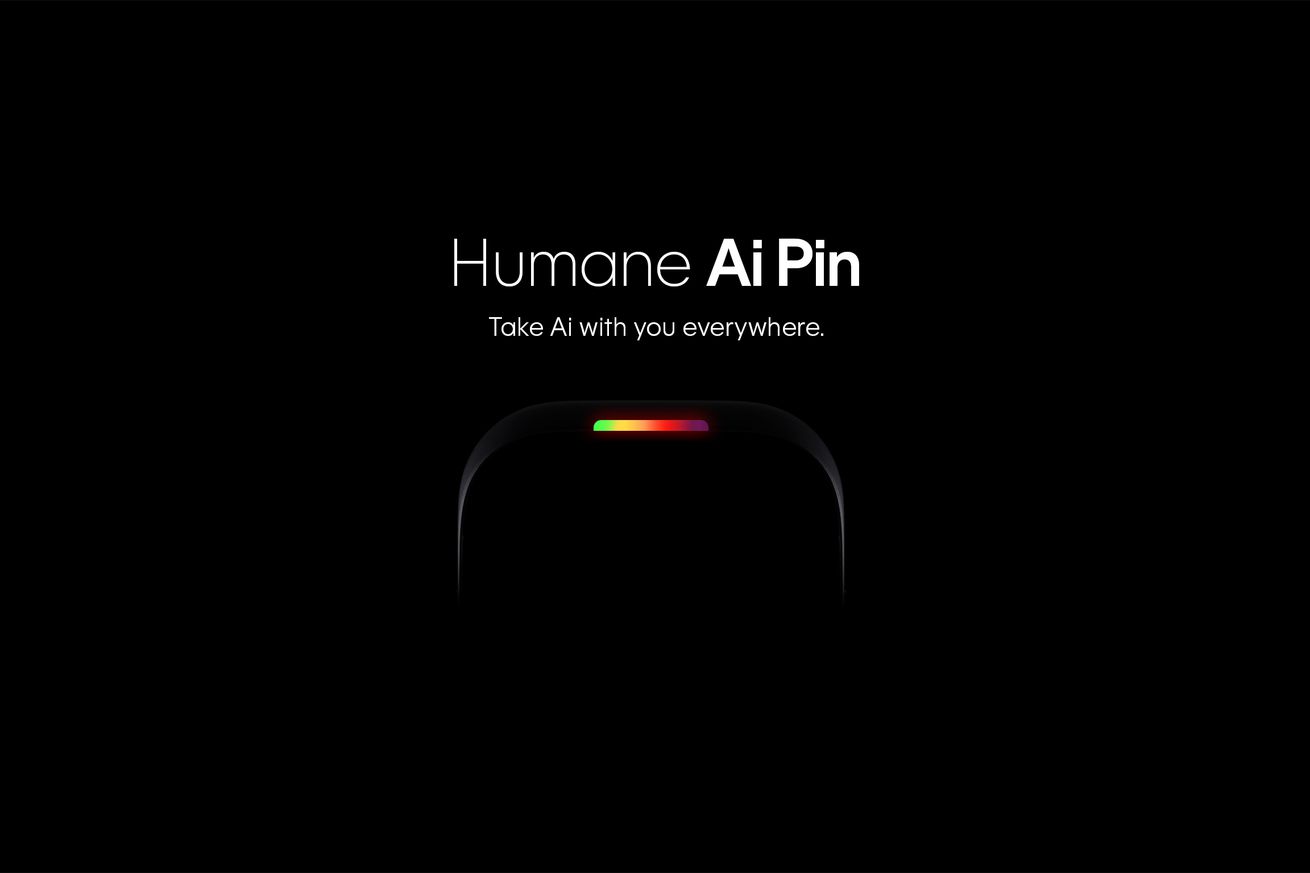
Humane’s first gadget is named the ‘Humane Ai Pin,’ and it’s coming this year
Humane, the buzzy company started by former Apple employees that has been making big promises about an AI-first and post-smartphone future, announced today that its first gadget will be called the Humane Ai Pin. It’ll be powered by “an advanced Snapdragon platform” in partnership with Qualcomm, and it’s coming later this year.
That’s really all we know so far. Humane continues to be mysterious about how the Ai Pin works, what exactly it will do, and even what it looks like. (Most mysterious of all: why in the world is “AI” not capitalized? What is “Ai?” Am I supposed to pronounce it like “eye?” I am confident this will infuriate The Verge’s copy desk and me in equal measure for years to come.)
The last we saw of this gadget was at the TED conference in April, where co-founder Imran Chaudhri demoed a device — presumably the Pin — onstage. He used it as a voice assistant; made phone calls; received an automated summary of his day; took a picture to get nutrition info on a chocolate bar; and projected a small green screen into his hand. We came out of that demo with far more questions than answers because something about the demo just seemed off. How did the device know to translate Chaudhri’s words from English to French, for instance, when he never asked for a translation?
The name announcement does potentially answer one open question about how exactly you’re supposed to wear this thing. In Chaudhri’s TED demo, he appeared to have the device sticking out of a breast pocket — it looked more like a deck of cards than a pin, but presumably, it was a prototype. Calling it a “pin” implies that you might, you know, pin it to yourself in some way rather than needing pockets all the time. Humane also calls it a “clothing-based wearable device” in its press release announcing the name, which suggests something similar.
Most of our questions remain unanswered, though. Other than the name, the only revealing thing about Humane’s release today is that it uses “AI” 22 times and that the Pin “uses a range of sensors that enable contextual and ambient compute interactions.” Which, sure. Humane’s slow drip of information will likely continue for the next few months, so hopefully we’ll start to learn how this works, how you’re supposed to use it to do things, how it connects to the cloud, why a projector is better than a phone screen, and what it’s all going to cost.
Still, I’m unabashedly intrigued by the Ai Pin. It’s a huge swing at a new form factor and potentially a whole new idea about how we’re supposed to interact with technology. In a world increasingly full of screens — in our hands, on our bodies, even on our faces — Humane’s going the other way. And it’s going to be fascinating to watch.

